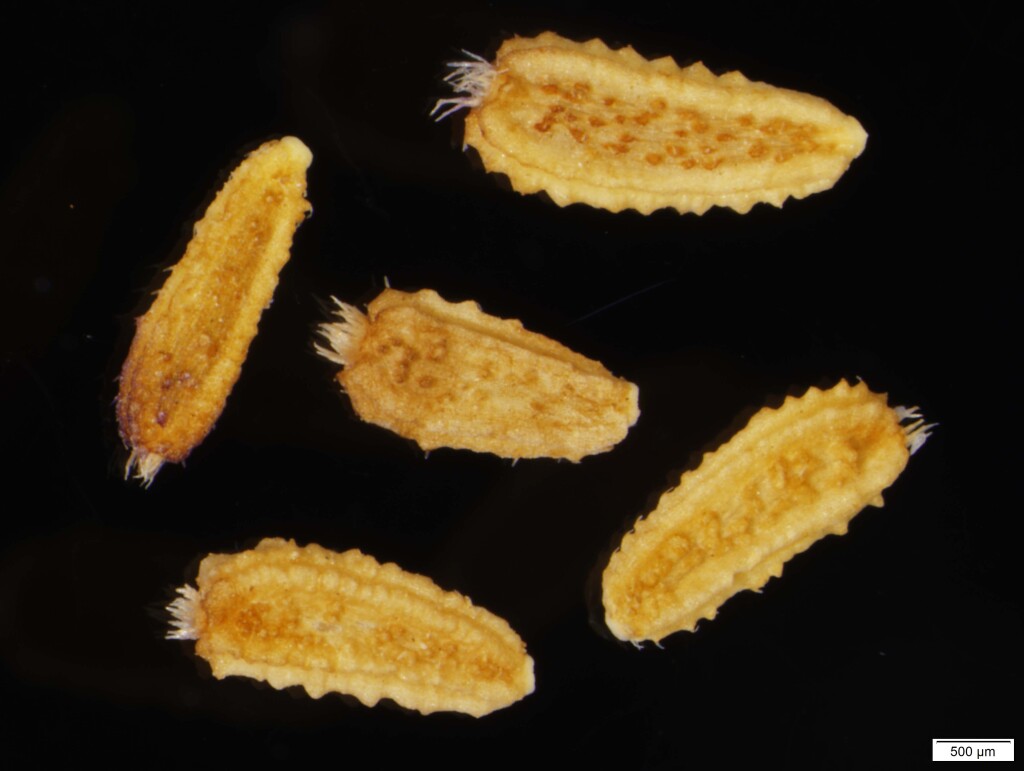Brachyscome willisii
P.S.Short Narrow-wing DaisyRhizomatous, weakly ascending to erect herb, branches to c. 25 cm long. Leaves cauline or mostly in a near-basal rosette, hairs sparse to dense, eglandular and glandular; basal leaves pseudopetiolate, obovate to oblanceolate or spathulate, 2–7 cm long, 8–20 mm wide, teeth or lobes obtuse to acute, 3–25; upper leaves similar, sometimes subamplexicaul. Flowering branches with sparse to dense eglandular and glandular hairs; capitula c. 5–8 mm diam.; bracts 15–25, 1-seriate, c. equal, obovate to oblanceolate, 3.3–5.2 mm long, 1.1–1.7 mm wide, acute to acuminate, glabrous or with scattered glandular hairs, mainly green and herbaceous but with narrow, often purplish, hyaline margins; ray florets 18–35, 6.7–7.5 mm long, white, lilac, mauve, purplish or pink; disc florets c. 40 or more in larger capitula, yellow. Cypselas obovate to oblanceolate, 2.1–2.4 mm long, 0.7–1.3 mm wide, uniformly pale brown, ridges on lateral faces not swollen, sometimes distinctly flange-like; lateral faces tuberculate, curved hairs on tubercles, glandular hairs occasionally near the base of immature fruit; ribs smooth to somewhat tuberculate, unwinged; pappus 0.18–0.44 mm long, bristles barely joined at the base. Flowers Sep.–Nov.
VRiv, NIS, EGU, HSF, HNF, VAlp. In Eucalypt forest and woodland usually with a grassy understorey, mostly north of the alps between the Warby Range and Mount Granya but extending south to around Omeo and the Wonnangatta River.
This species has previously been referred to as Brachyscome aff. formosa 'entity 2' (Salkin et al. 1995) and along with Brachyscome salkiniae was included by Willis (1973) under the name B. angustifolia var. heterophylla (Benth.) G.L.R. Davis, a taxon restricted to New South Wales (Short 2009).
 Spinning
Spinning
